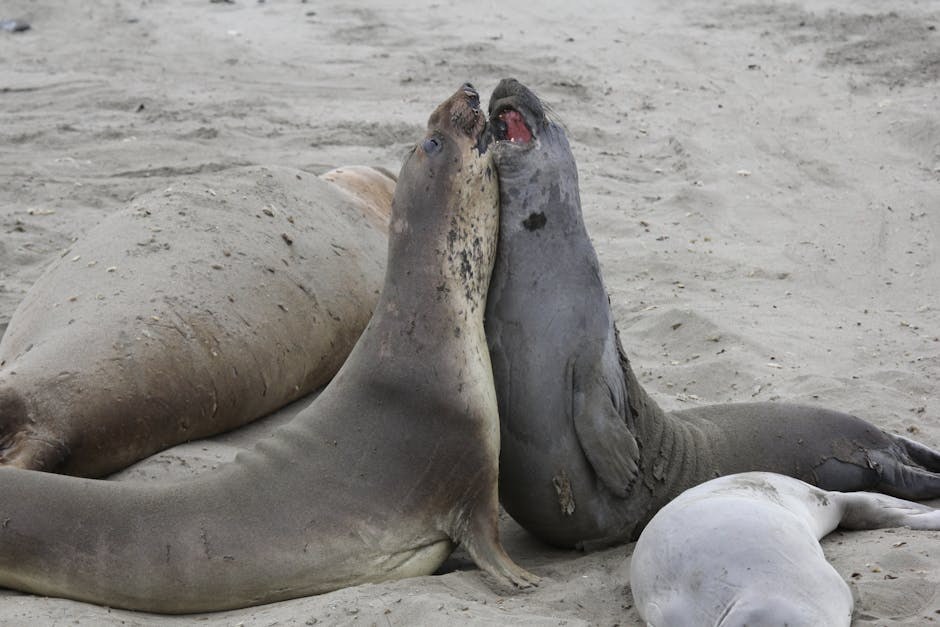Modern dating rewards clarity, yet mystery still turns heads – and hearts. If you feel like you’ve been doing “all the right things” without much traction, you may be missing the quiet voltage of tease and denial . Think of it as a graceful push-pull: you show genuine interest while leaving the door slightly ajar rather than flung wide open. Done authentically, tease and denial invites curiosity, heightens anticipation, and allows attraction to gather heat at a natural pace.
This isn’t about mind games or pretending to be someone you’re not. It’s about pacing. Attraction blooms when attention is offered in measured moments, when conversation leaves room for follow-up, and when availability is real yet not endless. The aim is simple – create a rhythm that makes him lean forward rather than lean back. Used respectfully, tease and denial helps you guard your time, elevate your value, and spark deeper interest without oversharing or overcommitting.
Below, you’ll find a full walk-through: the psychology that makes this approach so magnetic, how to set the tease, how to hold the line with poise, when the method shines, when it backfires, and how to transition from flirtation to something more substantial. Throughout, the guiding principle remains the same – let tease and denial be an instrument of authenticity, not artifice.

Attraction’s Quiet Engine
Attraction rarely thrives on constant, uninterrupted certainty. A touch of the unknown can be irresistible because our minds naturally tug at open loops – unfinished stories, paused conversations, unasked questions. Tease and denial uses that impulse with care. You share just enough to be vivid and real, then you let silence or space do a sliver of the work. The result is a tempo that feels alive: interest flickers, curiosity grows, and both people have time to wonder – and want.
Another force at play is perceived value. When your time is structured and your attention is selective, it reads as self-respect. Respect is attractive. With tease and denial , you calibrate your responses and invitations so they mirror your priorities. You’re not withdrawing affection; you’re stewarding it. The message is subtle yet powerful – your life is full, and if he wishes to be part of it, he’ll need to meet you with care and consistency.
Why Common Pickup Moves Fall Flat
Many quick-fix pickup tricks rely on being seen in the first place – a sidelong glance, a practiced walk-by, a fleeting smile. But attention is fragmented, and staged signals often vanish in the noise. Tease and denial doesn’t hinge on spectacle. It leans on pacing, intention, and contrast. Instead of blasting availability, you offer moments that feel intentional – a focused reply, a story with a cliffhanger, a plan that stops at a high note. These small contrasts – a warm touch followed by an airy goodbye – are the scaffolding that lets interest stand on its own.

The Tease – Setting the Hook Without the Hard Sell
Teasing is the bright spark at the start. It’s not coyness for its own sake; it’s artful specificity. You give him something to remember, then you leave a little light on in the hallway. Below are ways to set that spark while staying true to yourself and honoring the spirit of tease and denial .
Half-told stories. Share a vivid slice – “I ran into someone from a past life today” – and drift to another topic. Unfinished threads invite follow-up. The key is sincerity: offer a real moment, then let the open loop breathe. That’s classic tease and denial in narrative form.
Light, suggestive texts. Send a line that hints rather than declares – “Remind me to tell you about the rooftop thing.” The invitation is there, but the full picture waits. Messaging this way keeps tease and denial playful instead of performative.

Offbeat interests. Mention a niche passion – stargazing, artisan bread, city stair climbs – and hold back the monologue. Little surprises make you dimensional, and tease and denial thrives on dimension.
Open-ended compliments. “You notice details most people miss.” It flatters while leaving meaning to discover. The ambiguity is friendly, and it harmonizes with tease and denial without feeling cryptic.
Tempo shifts. If a chat gets lively, don’t stretch it thin. Pause while it’s buzzing. Ending on a high is structural tease and denial – memory locks in at the peak.
Serial sharing. Treat stories like chapters. Share one scene, save the next for coffee. This staggered rhythm keeps the door open – the heartbeat of tease and denial .
Witty back-and-forth. Playful challenges (“Careful, you’re two hot takes away from a debate.”) create motion. Banter is kin to tease and denial because it offers spark without finality.
Ambiguous warmth. “Our timing is always interesting.” It’s affectionate, not definitive. Leave space for discovery – the signature move of tease and denial .
Unexpected micro-plans. Suggest a quick detour – a sunset walk, a five-minute espresso stop. Keep it small and spontaneous so the moment shines. Scarcity is the quiet ally of tease and denial .
Exit while glowing. Wrap the evening while laughter still lingers. Departing at the crest makes the next invitation easier – a graceful echo of tease and denial .
The Denial – Hold the Frame Without Freezing the Vibe
Denial isn’t coldness; it’s calibration. You’re not shutting the door, you’re setting the hinge. The point of tease and denial here is to maintain momentum without surrendering your pace, needs, or boundaries.
Selective availability. Say yes with timing: “This week’s packed, but Thursday looks good.” That phrasing shows interest and signals a life you respect – textbook tease and denial .
Measured responses. When praise arrives, accept it with warmth – “Thank you” and a smile. Overexplaining smothers the spark. Minimalism is elegant tease and denial .
Keep your standing plans. If you have class, training, or book club, honor it. Consistency is attractive, and tease and denial works best when your life stays your life.
Gentle no’s with open doors. “Tonight’s tight – how about Saturday afternoon?” A soft boundary that still invites connection is the human version of tease and denial .
Boundaries as signals. If a plan misaligns with your comfort, redirect kindly. Clear limits aren’t distance; they’re trust – and trust supports tease and denial rather than undermining it.
Share, don’t spill. Offer feelings proportionate to the moment. “I like our pace” beats a sweeping confession. Contained honesty is sustainable tease and denial .
Body language balance. Eye contact and warmth, paired with relaxed posture. Express interest without angling for reassurance – the embodied form of tease and denial .
Deliberate anticipation. Pin a plan a few days out. “Let’s save that film for next week.” Looking forward is part of the pleasure – true to tease and denial .
Conversation with edges. Offer a headline instead of the whole article: “I found a hidden trail.” Curiosity does the rest – a conversational nod to tease and denial .
Humor as a speed check. If commitment talk sprints, quip lightly: “Let’s not outrun the opening credits.” Laughter resets pace – supportive of tease and denial without turning chilly.
When the Method Shines
Context matters. Tease and denial glows brightest in specific dynamics – the ones where attention wobbles, competition exists, or momentum needs a nudge.
Short attention patterns. If his focus is hot-cold, give brief, vivid moments, then step back. The contrast re-centers his attention – a great fit for tease and denial .
High-competition environments. When many voices vie for him, offer quality over noise. A single memorable exchange plus a well-timed exit is strong tease and denial .
After other tactics stall. If flashy moves flop, switch to pace and presence. Let the simplicity of tease and denial do the heavy lifting.
He’s playing distant. Mirror lightly. Don’t chase; create draw. A poised version of tease and denial flips the magnet without drama.
Visuals don’t move him. If surface cues don’t land, lean into story, tempo, and conversation. Depth pairs naturally with tease and denial .
When to Skip It
Some situations ask for straight lines, not ellipses. In those cases, tease and denial can confuse the signal or feel like a stall.
He’s already invested. If he’s present and consistent, keep communication clear. Heavy tease and denial here may read as mixed signals.
No-games preference. If he values directness above all, choose transparency. Subtlety is lovely, but not every ear tunes to it – and that’s okay.
Radical candor types. If he speaks feelings plainly, mirror with steady honesty. Too much tease and denial might look like ambivalence.
You’re the sole focus. If his attention is already anchored, withholding can discourage rather than entice. Here, warmth beats restraint.
Depth is his entry point. If he seeks meaning first, elevate substance sooner. A lighter touch of tease and denial is plenty.
From Spark to Substance
Once rapport forms, let the energy evolve. The goal is a glide path from early sizzle to durable connection. Think of tease and denial as the prelude, not the whole symphony.
Broaden the conversation. Trade stories that shaped you – decisions, turning points, mentors. When trust rises, tease and denial can recede while honesty expands.
Show sustained curiosity. Ask about his projects, pressures, and joys. Follow threads. Depth signals real care beyond the dance of tease and denial .
Plan with meaning. Choose dates that reflect shared interests – galleries, hikes, cooking experiments. Shared novelty bridges the early tease and denial stage to something sturdier.
Fold in your circles. When the time feels right, let friends and family enter the picture. Context fortifies connection as tease and denial steps back.
Honor boundaries as you grow. Progress isn’t a permission slip to bulldoze comfort. Respect keeps the chemistry safe long after tease and denial fades.
Be reliably you. Follow through on plans, messages, and promises. Reliability transforms sparks into embers. That steadiness completes what tease and denial began.
Explore future rhythms. Compare priorities, timelines, and dreams – travel, career arcs, creative goals. Vision-sharing is the natural sequel to tease and denial .
Keep play alive. Surprise notes, off-beat adventures, inside jokes – freshness matters. You don’t abandon fun when tease and denial lightens; you repurpose it.
Show up during headwinds. Be present when life gets messy. Quiet support often says more than flourishes. It proves there’s substance beneath earlier tease and denial .
Let affection unfold. Increase closeness at a pace that matches trust. As intimacy grows, the role of tease and denial naturally shrinks – and that’s the point.
Practical Scripts and Micro-Moves
To ground all this, here are sample phrasings and tiny habits that align with tease and denial while staying kind and clear.
After a great chat: “This was fun – let’s pick it up later.” You cap the moment, preserve the glow, and avoid lingering past the peak.
When asked on short notice: “Tonight’s full, but I’m open on Thursday.” You protect your time and show interest with specifics.
When a compliment lands: “That’s generous – thank you.” Clean acceptance beats a ramble.
When you need a pause: “I’m going to hop off here – more soon.” Crisp exits feel intentional.
When curiosity is the goal: “Remind me to tell you the street-corner coincidence.” Plant the seed, save the story.
Mindset Check – Authenticity Over Performance
The heartbeat of this approach is sincerity. If tease and denial feels like a costume, the friction will show. Let the method fit your nature. If you’re naturally warm, keep the warmth; just add pacing. If you’re reflective, keep the thoughtfulness; just prune the overshare. Attraction thrives when your signals match your core. That alignment is more compelling than any tactic.
Equally important: consent and respect. Flirtation should never blur boundaries or dismiss direct communication. Tease and denial lives in the realm of tone and timing – not mixed signals that toy with feelings. When in doubt, opt for kindness. You can be clear and still keep a little mystery; those qualities are not opposites.
Calibrating for Different Temperaments
Not everyone reads the same social cues or enjoys the same tempo. You can adapt tease and denial to match personalities without losing the essence.
The fast-mover. Affirm the chemistry, steady the pace: “I’m enjoying this – let’s keep it unrushed.” You’re not dampening excitement; you’re preserving it.
The thoughtful observer. Offer substance earlier – a meaningful anecdote, a question with depth – while still leaving space. Here, tease and denial becomes gentle cadence rather than cliffhanger.
The distractible charmer. Keep your touches short, bright, and memorable. Frequent peaks, short durations – a perfect glide path for tease and denial .
Reading the Room – Signals to Adjust
Good pacing listens as much as it leads. If responses shrink, if plans perpetually slip, or if jokes about mixed signals crop up, it may be time to ease the throttle. The spirit of tease and denial is to enliven connection, not to keep anyone guessing indefinitely. If momentum is real, move a step closer; if confusion grows, clarify. Healthy attraction doesn’t rely on permanent scarcity – it uses it sparingly, like a spice.
From Flirtation to Connection – A Closing Note
There’s no universal blueprint for romance, only patterns you can test and tune. Tease and denial works because humans cherish what’s earned and remember what leaves a trace. Use it to protect your time, to spotlight your value, and to invite pursuit without pressure. Then trade the spark for warmth – conversation that breathes, plans that mean something, affection that grows because both of you make room for it. When the dance is honest, you won’t need to perform. You’ll simply set the tempo – and he’ll meet you on the beat.